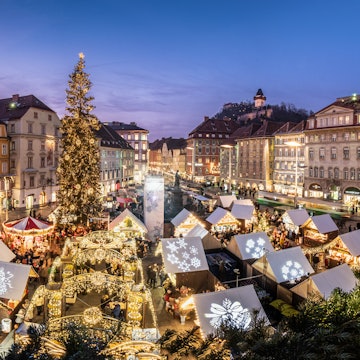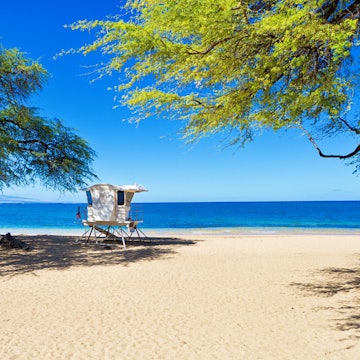

People enjoying the sunshine near the Imperial Butterfly House at the edge of the Burggarten park.
With its lavish whirl of Hapsburg palaces, neoclassical concert halls, posh coffee houses and galleries stuffed with Old Master paintings, Vienna can seem overwhelmingly grand. So it might come as a surprise to know that with a little careful planning you can see a heck of a lot of the Austrian capital without spending a single cent.
Dodging Vienna's tourist traps and making the most of the Austrian capital on a tight budget is easy when you know how – and we're not talking second-rate experiences here.
Read on for our round-up of 12 top things to see and do for free, from museums showing Klimt masterpieces to bike rides around the Ringstrasse and saunters in baroque palace gardens.

1. Go gothic at Stephansdom
Popping up above the Innere Stadt, Vienna’s crowning glory Stephansdom cathedral – ironically nicknamed Steffl ("Little Stephan") – quite literally stops you dead in your tracks and forces you to look skywards for a glimpse of its 12th-century stonework and dazzling chevron-tiled roof.
While you’ll have to pay to hook onto a guided tour, explore the catacombs or clamber up the south tower, you can get a sense of the scale and majesty of the cathedral for free by visiting the atmospheric interior and smaller altars.
Planning tip: Skip breakfast to be at the cathedral when it opens at 6am. It has a special atmosphere at this early hour and you’ll pretty much have it all to yourself.
2. See Vienna from above
MQ Libelle, on the roof terrace of the Leopold Museum, wows with knockout views all the way from the MuseumsQuartier to the Hausberge mountains. The glass structure of the Libelle, (German for "dragonfly"), is an artwork in itself, but there is also an exhibition space for art installations right underneath it called MQ Art Box, which is open 24/7 and you can visit for free. The rooftop area is open daily except for Tuesday and access is via two outdoor lifts on the east side.
For sweeping views, head to the new 360° Ocean Sky, on the 11th floor of a repurposed flak tower. You can stop for a drink, but you don’t have to. The elevator stops next to the entrance to the restaurant, so you can walk the entire platform and enjoy the panorama without entering the venue.
3. Admire sprightly Lipizzaner horses
Central Vienna’s backbeat is the sound of Fiaker (horse-drawn carriages) jauntily clip-clopping over cobblestones. Firmly aimed at tourists, even a short spin can be pricey. Instead, get your horse fix at the resplendently baroque Spanish Riding School, where Vienna’s graceful, snow-white Lipizzaner stallions, which used to be bred for the monarchs of the Habsburg court, train and perform. Tickets are like gold dust, but you can see the horses in their stalls for free.
Planning tip: To catch the Lipizzaner briefly in action, visit just before 10am from Tuesday to Saturday, as they get led across the Reitschulgasse to the Winter Riding School for their morning exercises.
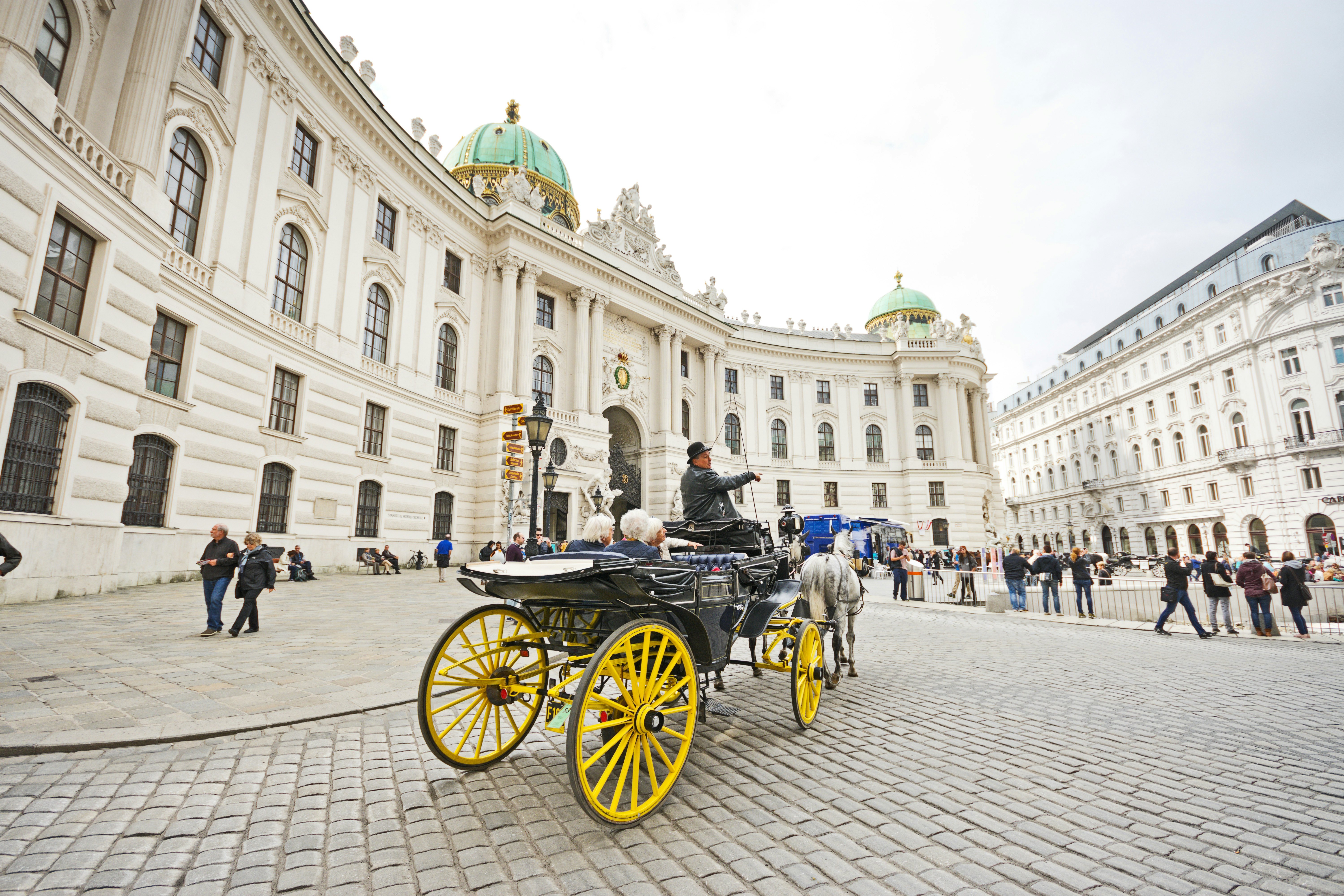
4. Pound the city streets
To really see Vienna, walk it. The Hofburg, in the 1st district, was the Habsburg dynasty's HQ for 700 years; approach it from cobbled Michaelerplatz, guarded by colossal Hercules statues, for the full whack of its imperial might.
Notice Otto Wagner's gold-kissed, flower-draped Jugendstil buildings near the Naschmarkt, as you amble south to the Freihausviertel, in the 4th district, crackling with creativity and full of one-of-a-kind cafes, studios and boutiques. Or for a brush with rebellious Viennese artist and eco warrior Hundertwasser's trippy, rainbow-bright, wonky-floored architecture, roam to the Hundertwasserhaus and Kalke Village, in the neighboring 3rd district, Landstrasse.
5. Experience park life
Plenty of local life unfolds in Vienna’s parks and gardens. When the sun's out, join locals in central pockets of greenery like the Burggarten behind the Hofburg, where a white marble Mozart is lifted high on a cherub-wreathed pedestal. Or twirl past Strauss in the pond-dotted Stadtpark.
A step beyond is the vast Prater, a 4km ribbon of meadows, wood and tree-lined avenues unfurling across former Hapsburg hunting grounds. It’s a brilliant spot for a picnic, ramble (especially on crisp autumn days when the chestnut trees turn rust and gold) or bike ride. Keep an eye open for the Riesenrad ferris wheel of Third Man fame.
Planning tip: Save on lunch by packing a picnic and heading to one of the parks to enjoy. Raid the delis and food stalls of Naschmarkt or Karmelitermarkt.
6. Hang out with great ghosts
To tiptoe off the beaten track, take tram 6 to Zentralfriedhof, where the ghosts of Beethoven, Schubert, Brahms and Strauss hang out in group 32a. Many other figures from the 19th and 20th centuries, including architect Albert Loos, writer Albert Schnitzler and beloved Austrian rockstar Falco, can also be paid homage in the vast grounds.
Give yourself plenty of time to explore the cemetery, which stretches for more than 0.9 sq mi (2.4 sq km). Aside from mausoleums, you will find dedications to fallen soldiers from both World Wars, the ornate church of St Borromäus and a museum of funerals.
7. Catch a classical music concert
Some of the ticketed summer shows at Vienna’s Staatsoper are live-streamed for free in its outdoor courtyard. Arrive around 90 minutes before curtains-up to secure a seat and enjoy the thrill of catching a show in the open air. The Vienna Philharmonic also hosts a free summer night concert in the sublime grounds of Schloss Schönbrunn, usually around mid June.
High culture doesn’t have to cost a mint the rest of the year either. Some of the best deals are the standing-room tickets at the city's stately 19th-century concert halls. Opera at the Staatsoper? That'll be €13 to €18 for a standing room ticket, sold 80 minutes before the performance. Or book standing room tickets (€10 to €15) up to seven weeks ahead to see the Vienna Philharmonic perform in the Musikverein's lavishly gilded Grosser Saal.
Planning tip: Look out for church organ concerts to get a classical music fix for free. Dates are often posted on their doors.
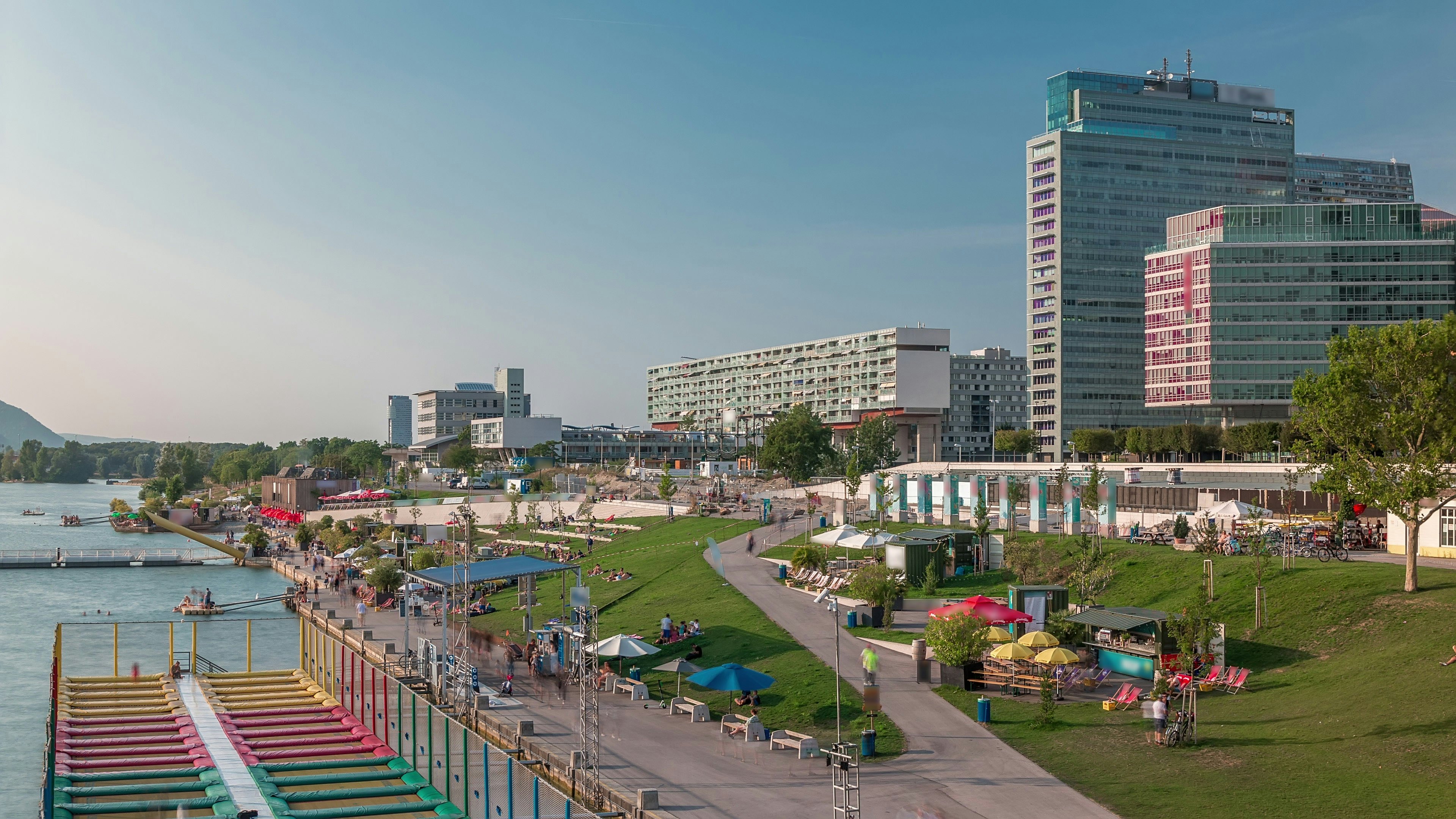
8. Head down to the Danube
Down by the river, the slender, 21km-long Donauinsel delivers a very Viennese shot of outdoor life, with graffiti art, beach bars and swimming spots. With the first summer rays, this is where the Viennese come to hike, jog, cycle, skate and stand-up paddleboard. At the island’s southern tip, things take a turn for the wilder at Lobau, a lushly wooded, lake-spattered floodplain forming part of Nationalpark Donau-Auen. Besides kingfishers, you might spy white-tailed eagles, grey herons and beavers here with any luck.
9. Waltz through palace gardens
For a free taste of the high life, swing over to the perfectly manicured Belvedere Gardens, which envelop the baroque beauty of UNESCO World Heritage-listed Schloss Belvedere. Laid out in classical French style by Dominique Girard, protégé of André le Nôtre of Versailles fame, the three-tiered gardens are a treat, seeming to sweep down to the city in a series of ornamental parterres, cascades and mythical sculptures.
Just as lovely are the French-style, folly-dotted Schloss Schönbrunn Gardens, where you can wander tree-lined avenues and swan around a baroque maze, fake Roman ruins and the Neptunbrunnen (Neptune Fountain). Right at the top, the columned Gloriette beautifully frames the view of Vienna.
Planning tip: These palaces are popular. Visit the gardens first thing in the morning or late in the afternoon to experience them at their peaceful best.
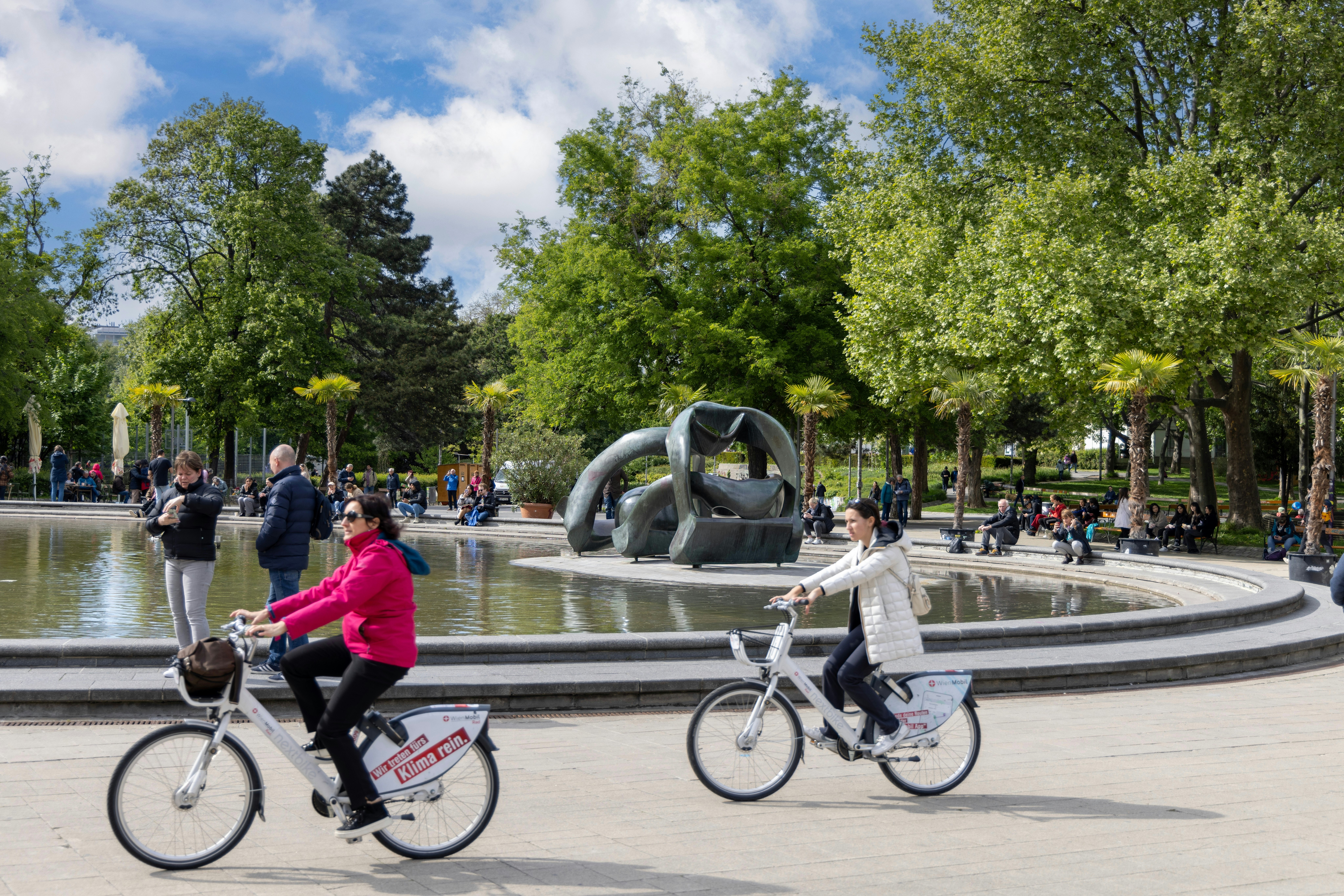
10. Get on your bike
Vienna is brilliantly connected by public transport, but there’s nothing like exploring this bike-friendly city with your bum in a saddle – and it needn’t cost you a thing. You can whizz around the city on WienMobil Rad bikes, which can be rented from more than 100 nextbike bike stations. There's a one-off payment of €0.75 to register with your credit card, but then you can ride for 30 minutes for free (and for just €0.75 per half hour thereafter). Download the app, scan the QR code and you’re good to go.
11. Dive into museums
Vienna’s big-hitter museums and galleries charge entry fees that quickly mount up, but timing is everything. If your stay happens to coincide with the first Sunday of the month, you are in luck, as many can be visited then for free.
Participating museums include the Wien Museum on Karlsplatz, showcasing everything from Roman finds and baroque art to Klimt and Schiele masterpieces, the Pratermuseum, which revels in the history of Vienna’s iconic amusement park; the Uhren Museum, which is home to more than 700 timepieces; the birthplace of composer Franz Schubert; and the Haydnhaus, where musical maestro Joseph Haydn lived in his later life.
Planning tip: More museums, you say? Invest in a 24- to 72-hour Vienna Card (www.wien.info), for hefty discounts on all the top sights and attractions.
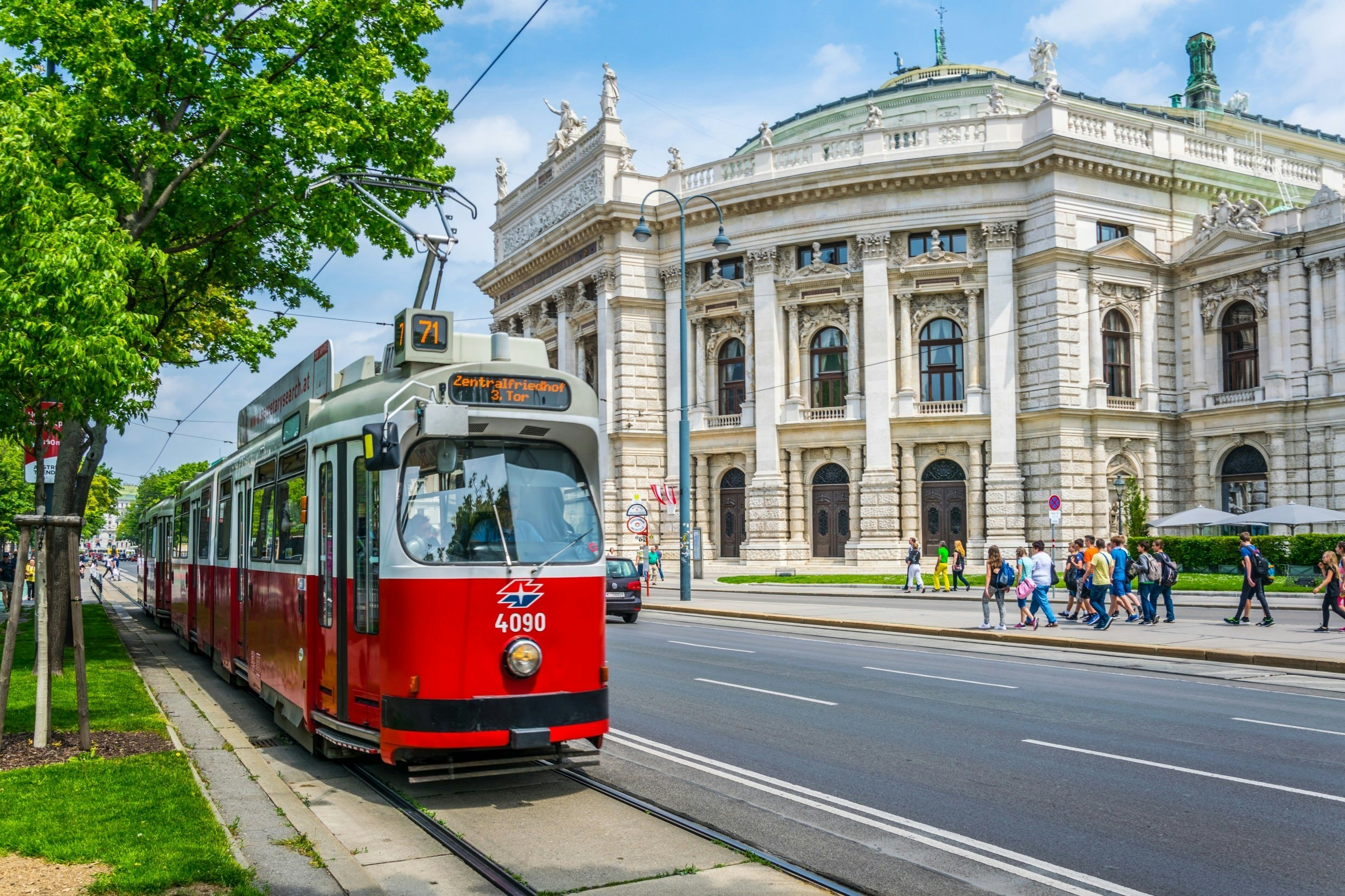
12. Take a free walking tour
Sauntering through Vienna’s historic streets is a great way to slip under the skin of Vienna and the ivie App can help do just that. Its self-guided walks cover key sights from the Schönbrunn Palace to the Ringstrasse and almost everything in between.
If you'd prefer some company, try one of the free guided walking tours offered by volunteers such as Vienna Greeters. Run by enthusiastic, clued-up locals, the private two-hour tours might just be the best way to get to know the city's off-the-beaten-track corners and lesser-known stories. Be sure to arrange yours at least two weeks in advance as slots fill up fast.












